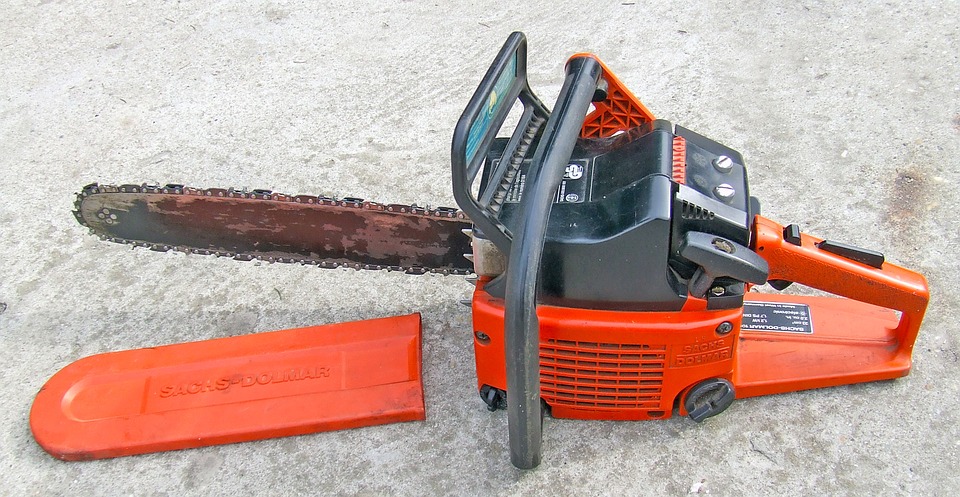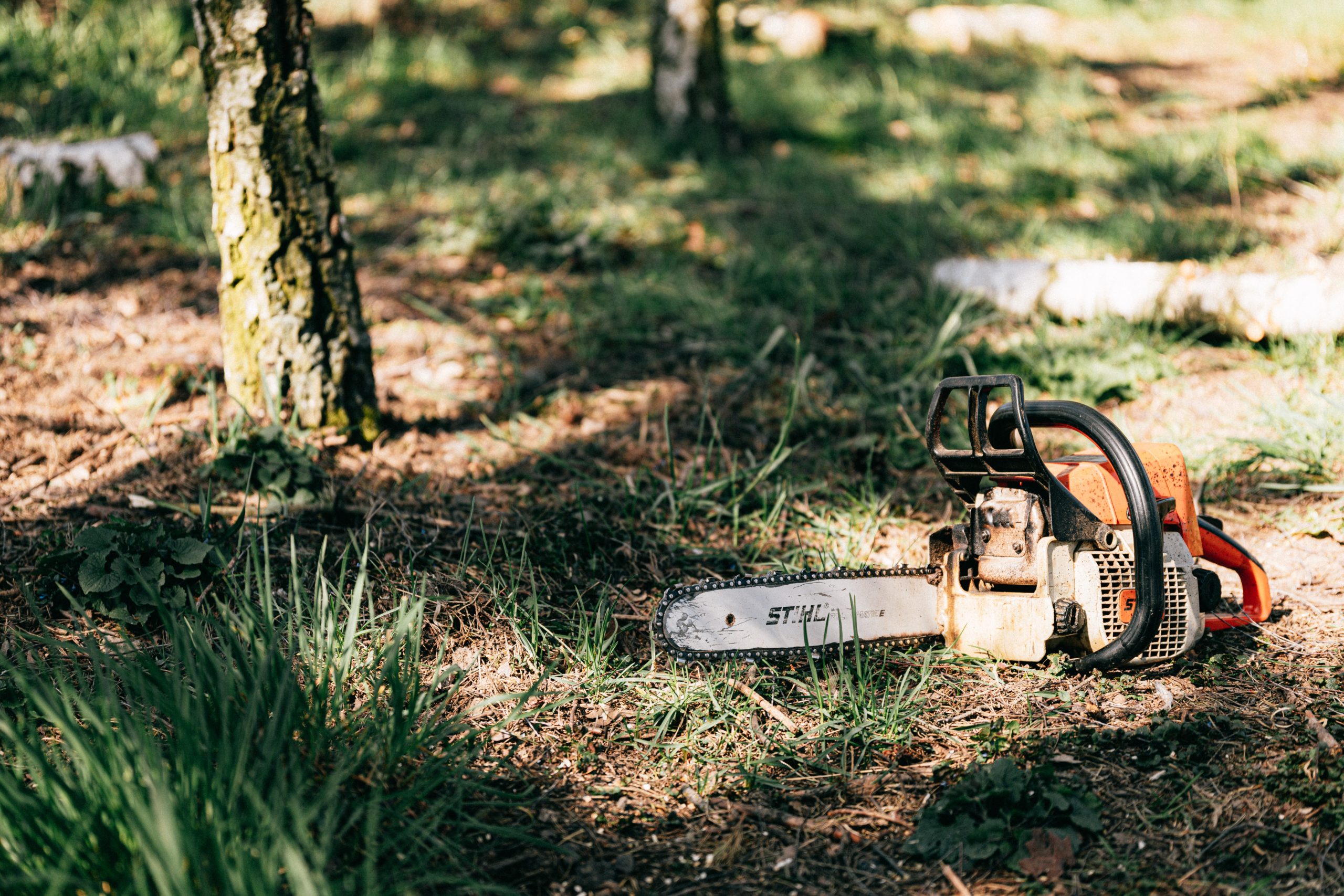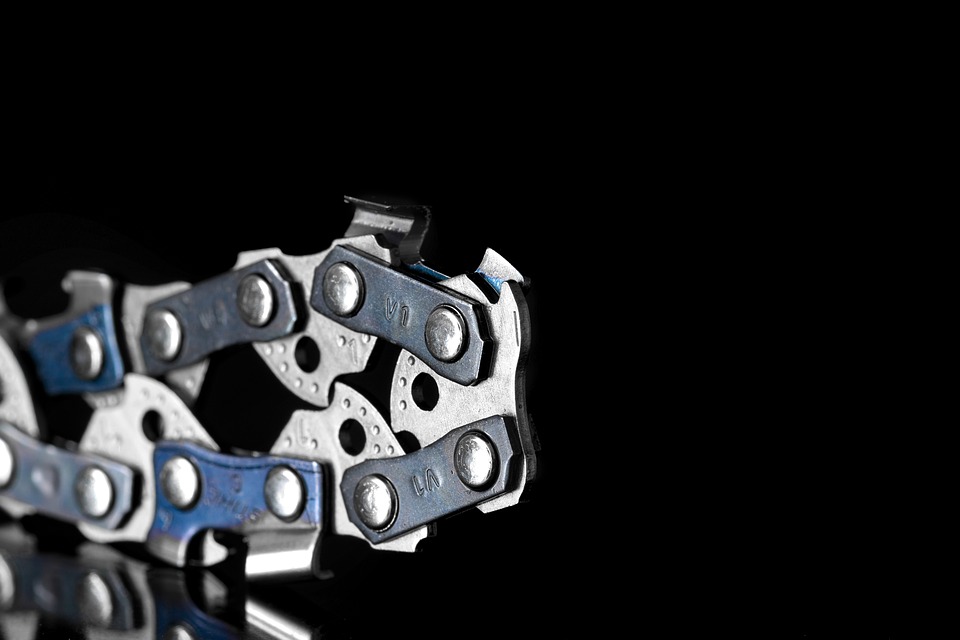Getting your chainsaw chain direction correct is a frequent cause of aggravation for those who have never had the pleasure of having it explained to them in a simple manner.
A backward chain on a chainsaw does not cut properly. Furthermore, with regard to safety: if the chain is reversed, all of the cutting blades are directed at you! Although not rocket science, chain alignment is critical for using a chainsaw effectively (and safely).
Examine the Chain
Make sure to clean the chain before properly examining it. Check to see which direction the drive link is pointing. The drive links should be facing forward and should be pointed forward. The drive links are generally sharp and wavy spikes located on one side of the chain.
Place the end of the chain on the tip of your thumb and see if it points towards your desired destination. If it’s pointing towards the conclusion of the bar, then your chain is in fact pointing in the right direction. If not, you have to adjust it. There’s a different approach as well and you may attempt it. The cutter, which slices the wood, is one of the most essential components of the chain. So, be cautious since the cutter is sharp and may harm your limbs if you make contact with it.
The rule of thumb is that the blade should be facing or pointing forward, and to do this you can simply touch the cutter on the top. If you don’t feel comfortable doing it, check the metal’s form. The height of a metal cutter is greater than that of a plastic one since it is intended to cut through from the front side.
The front portion of the triangle should be pointed, and it should face the bar. The rear-end is not as open as the bigger front. You may benefit from careful study in this area. Another excellent approach is also available. There’s another little bit of metal positioned in front of the cutter, too. It’s not a chopping knife, and its primary aim isn’t to cut but rather to guide the cutter through the material.
That’s the reason it’s called a guide. The primary goal of this guide is to limit the wood sliced by the cutter. In modern machines, guides assist the overall performance of the chain in controlling the aggression of the cut. If the chain is pointing in the correct direction and is immediately in front of the cutter facing the bar, it’s fine.
However, if after examination you feel like the chainsaw chain direction is not correct, I’ll show you how to get your chainsaw chain running smoothly if you follow these four steps to have your chainsaw chain on the correct path. I’ll show you how to get your chainsaw chain running smoothly if you follow these four steps to have your chainsaw chain on the correct path.
If you just want to be sure about an already-installed chain, go to step 3, to learn a fast technique to check.
Make sure your chainsaw’s chain is heading in the correct direction.
- Remove the chainsaw’s casing.
Start by preparing to replace your chainsaw chain. This involves removing the side casing from the chainsaw so you can access the bar and chain.
Excellent! You’ll be able to access the bar and connect the chains.
- Remove the chain and pry out the two pins.
Remove the chainsaw’s bar and chain. Set everything up in order. We’ll get to the good stuff later.

- Determine whether the cut will go up or down.
There are three things you can examine on a chain to ensure it is pointed in the proper direction.
In reality, probably just one out of three options below would suffice, but you could do all three if you want to be thorough.
The first thing you need to confirm is that the drive link is pointing forward.
It is a wave-shaped component that fits into the chainsaw bar groove. If the little wave is pointing towards the bar’s end (e.g., forward), your chain is oriented correctly.
You should also double-check that the blade is pointing forward and that it’s sharp.
The cutter is the only component of a chain that cuts the wood, as the name implies. There are a few signs to determine which way the cutter is facing. You can feel it (maybe not the most prudent option, be cautious, or use a different technique). You can also tell which type of metal it is just by its form. The front of the cutter is usually taller and more open than the rear of the cutter.
Finally, you may double-check that the guide is in front of the cutter right now.
Some individuals mistake the manual for a strategy book. It’s not a cutting blade at all. Its purpose is to regulate the number of wood pieces sliced by the cutter at once (which controls the aggressiveness of the cut).
If any of this chain component terminology is unclear to you, or if you’re simply interested in learning more, be sure to read our comprehensive guide on the anatomy of a chainsaw chain.
- Reassemble and ensure that the bolts are tight.
It’s now time to put everything back together after you’ve determined your chainsaw chain direction.

Maybe it’s just a Dull Chain
So, you’ve gone through all of the above procedures, from removing the chain to inspecting the drive link or cutter, and you still can’t figure out why your chainsaw won’t start. The second concept that springs to your mind are that the chain is probably dull.
When you’re cutting down trees, you shouldn’t push or force them if you do so, since the chain will be dull and it’s time to replace it or sharpen it. It might appear to be a difficult chore, but many individuals believe that sharpening a chainsaw is difficult. There are now several easy-to-use chainsaw sharpeners on the market that can sharpen your chain in only 5-10 minutes. Some of the other concerns that you may encounter with a chain that is dull include chainsaw shakiness or bouncing while cutting, producing odd sounds, and so on. Dull chainsaws produce little wood chips rather than huge ones, and they don’t cut through dense knots well.
Many individuals try to add extra lubrication in order to clean and make it operate smoothly when this happens, but this does not address the issue. The entire machine instead begins to smoke.
